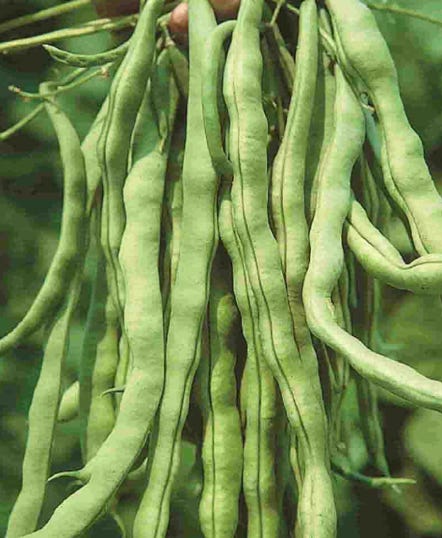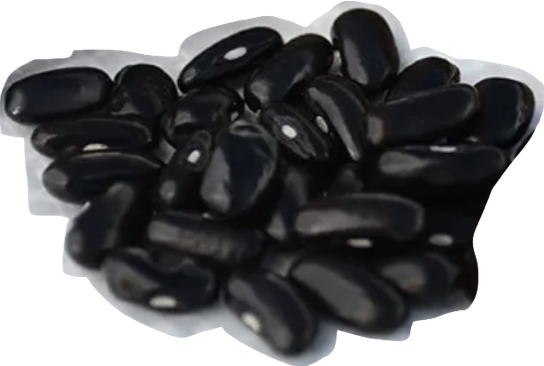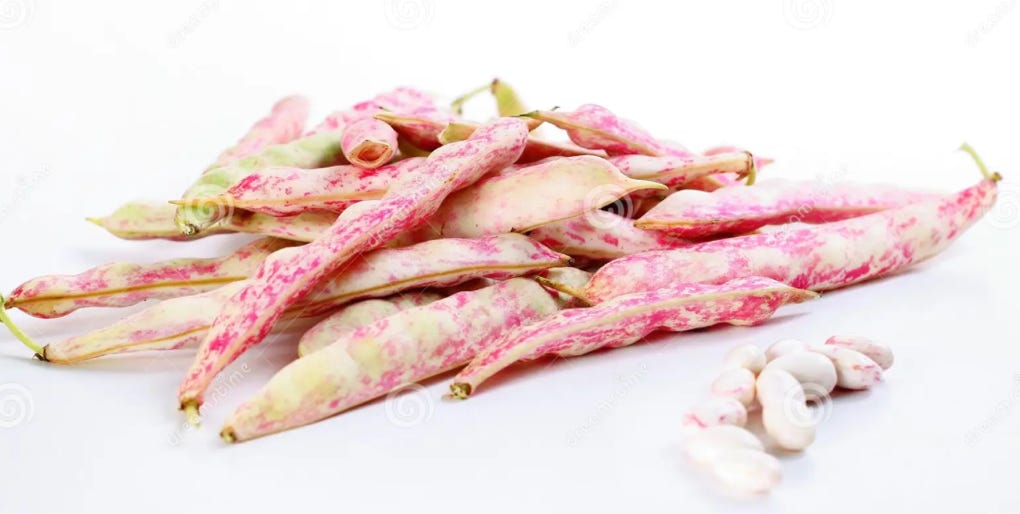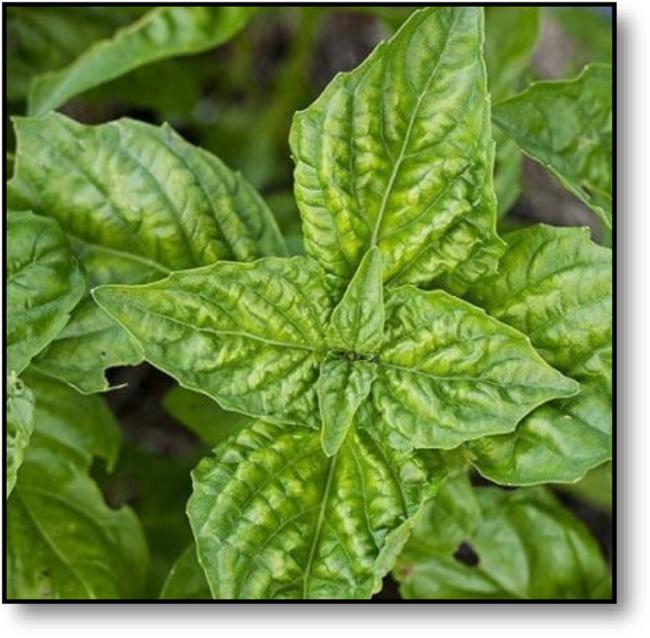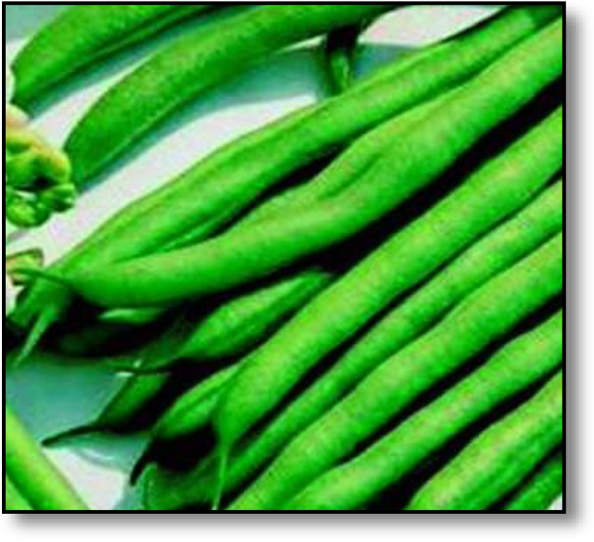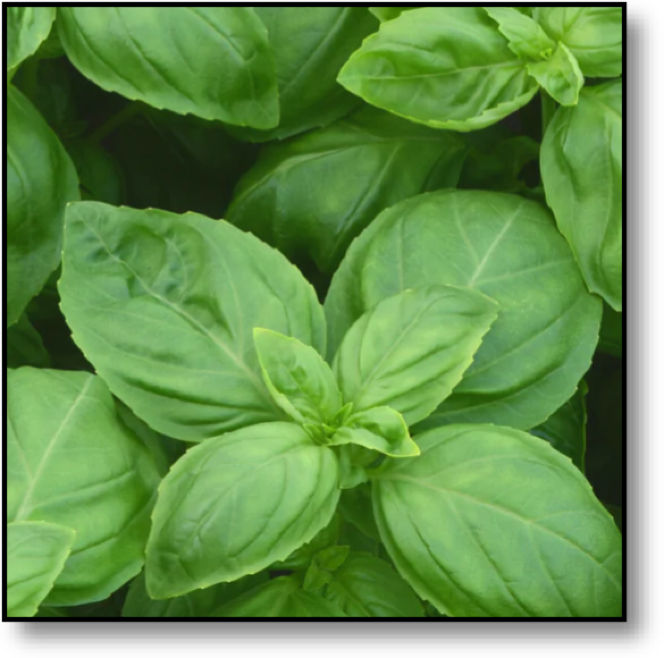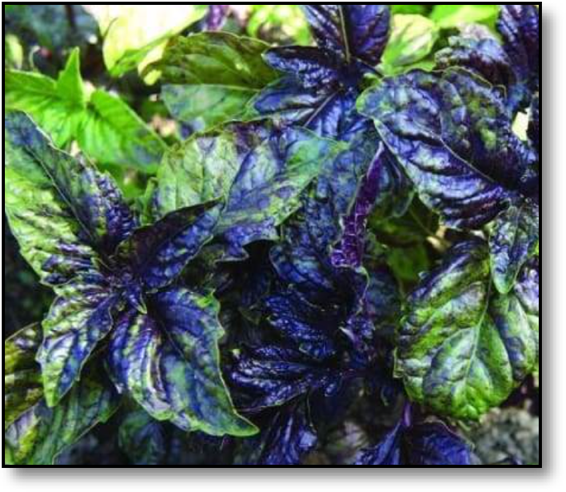JUNE
June 1. Planted beans in corn patch.
June 3. Harvested sugar peas. Transplanted basil around the tomato plants.
June 6. Harvested sugar peas and lettuce. The spinach, radishes, and lettuce are in abundance now and can be harvested as needed.
June 10. Asparagus is harvested every third day. Most of it is being processed and frozen.
June 13. First planting of peas end production. Planted pole beans in their place.
Kentucky Blue Pole
57 days - extremely early AAS Winner bred by Rogers Bros. is an improvement over its Kentucky Wonder and Blue Lake parents. I get prolific yields of 7 inch, straight, white seeded, stringless beans with delicious sweet flavor from sturdy, mosaic-resistant plants that climb six feet or more.
Rogers Brothers Seed Co. began producing pea seed in 1876 in Watertown, N.Y. and expanded with seed production facilities in Michigan, northern Wisconsin and then Wyoming, Montana and Idaho. In 1911 the company relocated to Idaho, where "There are not too many insects, no disease, a favorable length of growing season and it doesn't rain, which limits insects and disease.”
Kentucky Wonder Beans the truth is, while I love the uniformity, sweetness and crispness of hybrid Kentucky Blue, it does not have the nutty flavor unique to heirloom Kentucky Wonder bean. Kentucky Blue is a great bean for freezing, and steamed for a few seconds it retains its freshness on the plate. But Kentucky Wonder is a much better canning bean, and cooked with a little bacon and onion, nothing beats it. It grows great climbing on corn stalks.
Cherokee trail of tears - 80 days -
Canterbury Fall Beans are a heavy yielding fall bean I’ve also grown in corn rolls. It has been grown by the Canterbury family of Monroe County, West Virginia for over a hundred years. Fall or October beans are typically planted later than other beans and mature near the time of the first frost. They have large seeds that are great as dried beans. They can also be harvested as green beans or shelly beans but they are not stringless and the pods can be somewhat tough at the shelly stage.
June 15. Harvested 1st cucumber of the season.
June 16. 2nd pea planting harvest begins
June 24. Harvested beets and pinched the top leaves off the basil to make them bush out.
Basil is a member of the Mint family. Sweet basil (Ocimum basilicum) plays a role in many Mediterranean, and particularly Italian, cuisines. It forms the basis of pesto and adds a distinctive flavor to salads, pasta, pizza, and other dishes. If the recipe includes tomato, add basil.
Dolce Fresca - 28 days - 2015 AAS winner for its compact habit, strong fragrance, and vigorous performance. A Genovese type that stays healthy all season and recovers quickly after harvesting. Specifically developed by Pan American Seed for containers but adaptable to any garden space. Grows to 14”.
PanAmerican Seed is a wholly owned subsidiary of Ball Seed Company, founded by Ohio native, George Jacob Ball born in 1874 in Milford, Ohio.
George left school at 13 and began working at a greenhouse near Cincinnati. His career as a flower grower was interrupted by his service to his country in the Spanish-American war of 1898. After this brief military action, Ball resettled and built greenhouses in Glen Ellyn. IL. He sold cut flowers and potted plants to Chicago-area florists.
Italian Large Lettuce Leaf - 70 days – also known as 'Sweet Basil', Large Leaf Italian heirloom basil is native to Europe where it has been cultivated for centuries as a fresh and dried culinary herb. The plant prefers well-drained soil, even moisture, and full sun. The plants grow to about eighteen inches, and provide multiple cuttings.
Red Lettuce Leaf - 60 days - colorful reddish-purple leaves on a semi-compact plant with an aromatic taste. An heirloom whose origins are unknown, but lettuce-leafed varieties have been cultivated since at least the 1800s. Red Lettuce is a Napoletano variety which is slow growing and prefers hot, sunny conditions.

